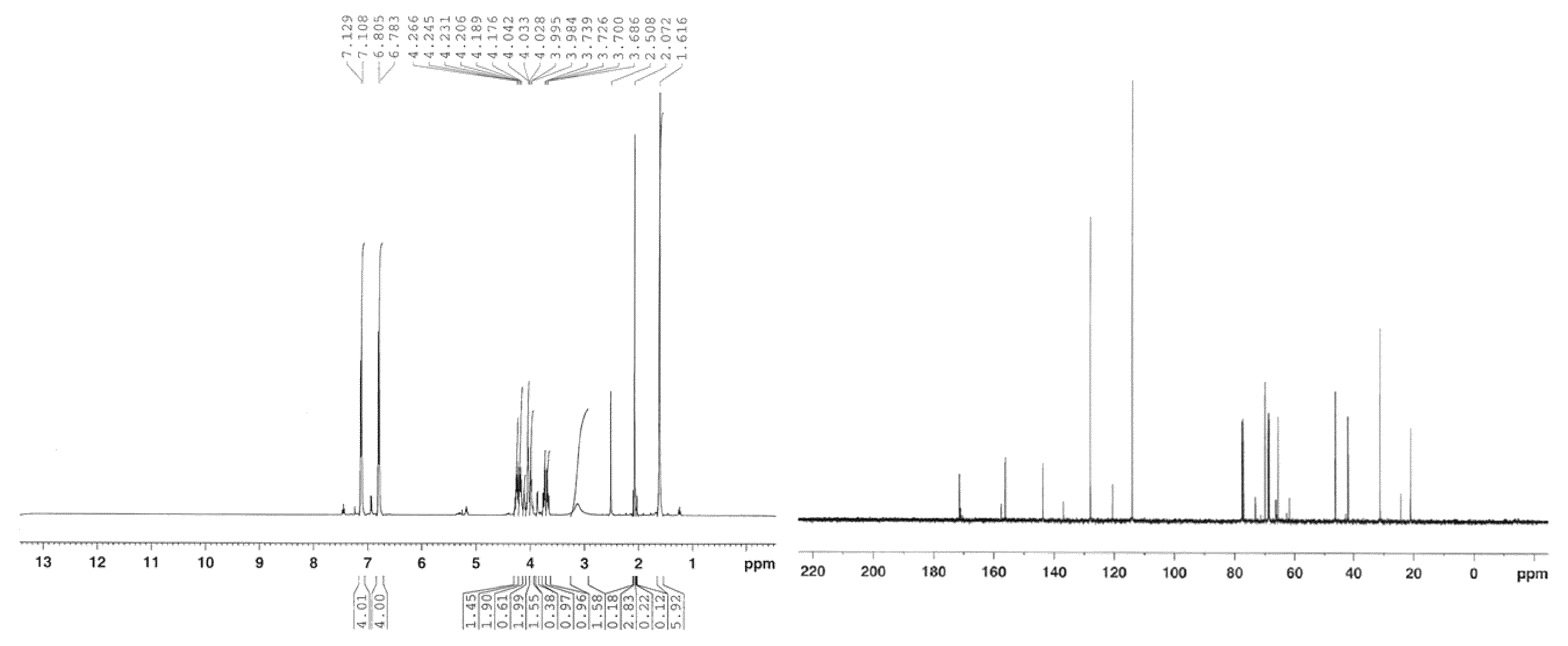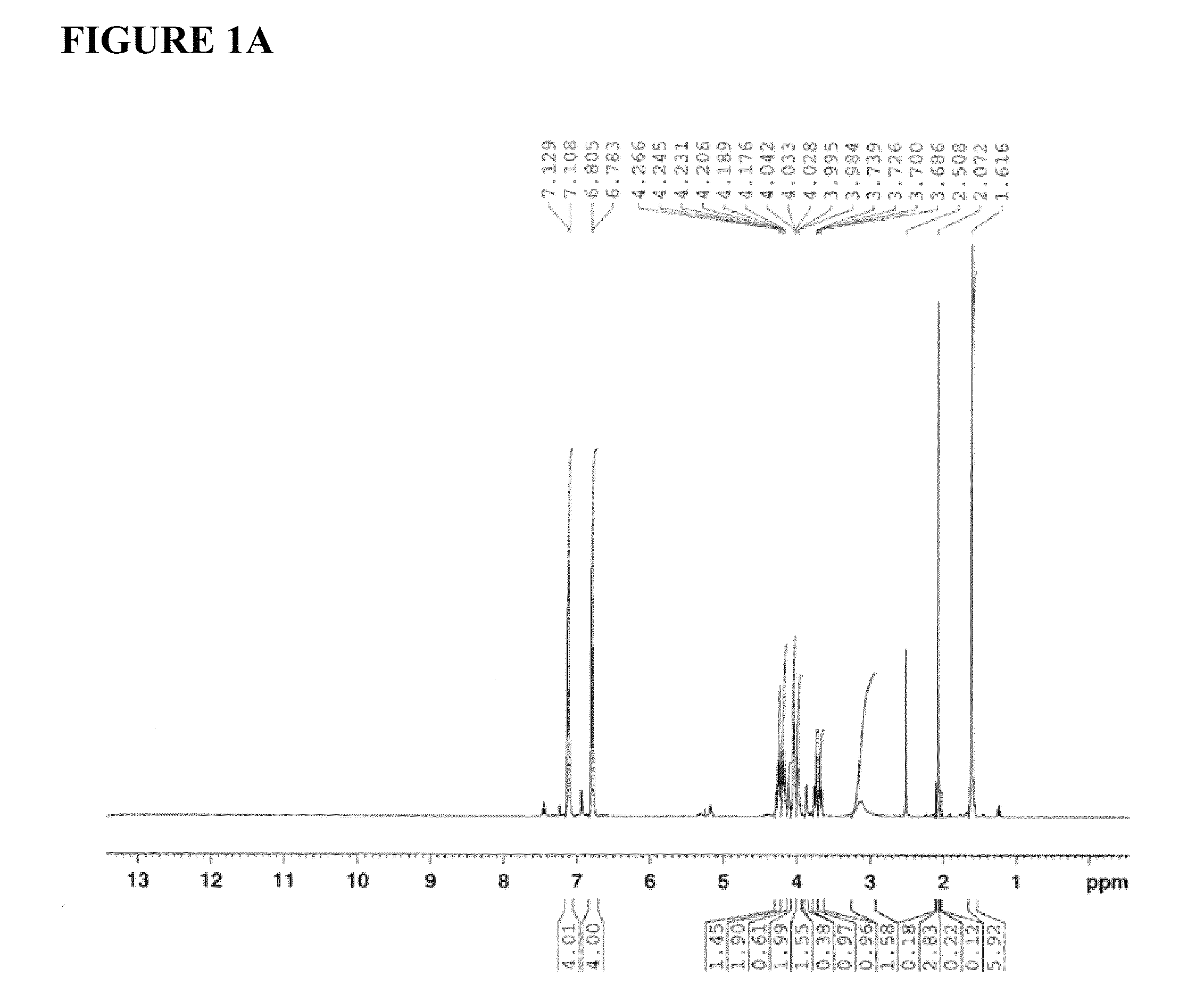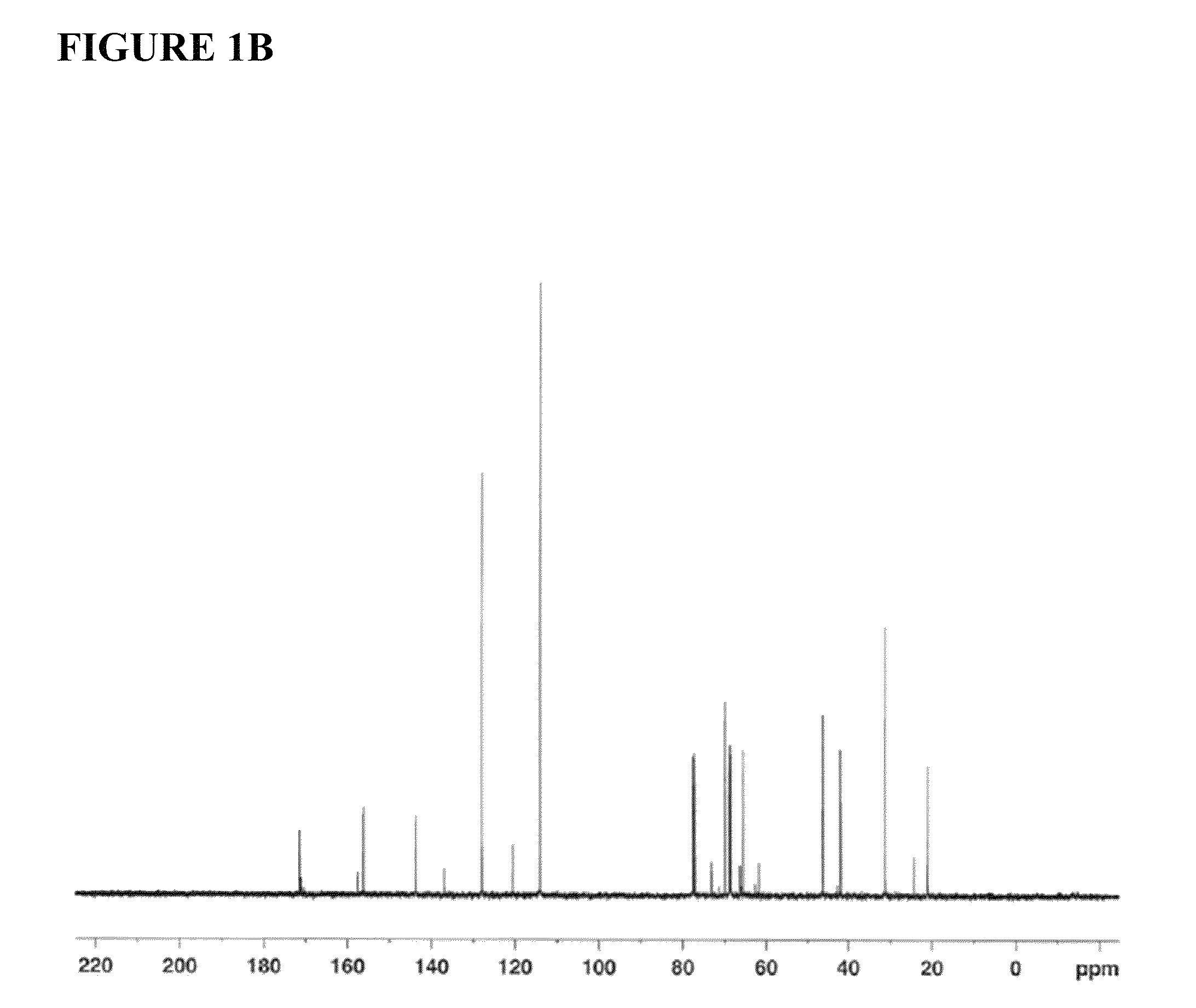Ester derivatives of androgen receptor modulators and methods for their use
a technology of androgen receptors and esters, applied in the field of ester derivatives of bisphenolrelated compounds, can solve problems such as hammering virtual docking drug discovery approaches
- Summary
- Abstract
- Description
- Claims
- Application Information
AI Technical Summary
Benefits of technology
Problems solved by technology
Method used
Image
Examples
example 1
Synthesis of (S)-4-(2-(4-((2,2-dimethyl-1,3-dioxolan-4-yl)methoxy)phenyl)propan-2-yl)phenol
[0235]
[0236]Sodium hydride (60% dispersion in mineral oil, 1750 mg, 43.80 mmol, 1.0 equiv) was added slowly to a stirred solution of Bisphenol A (10000 mg, 43.80 mmol, 1 equiv) in anhydrous dimethyl formamide (30 mL), at room temperature, and the contents were stirred under an atmosphere of argon for 20 min. (R)-(+)-4-chloromethyl-2,2-dimethyl-1,3-dioxolane 98% (7.10 mL, 52.56 mmol, 1.2 equiv) was added via syringe and the mixture was allowed to react at 70-80° C. for 40 h. Then, the reaction was quenched by the addition of a saturated solution of ammonium chloride (10 mL), and the mixture was extracted with ethyl acetate (3×20 mL). The organic layer was washed with deionized water (25 mL), dried over anhydrous magnesium sulfate, filtered and concentrated under reduced pressure. The resulting residue was purified by flash column chromatography on silica gel (eluent: 10% ethyl acetate in hexane...
example 2
Synthesis of (s)-2,2-dimethyl-4-((4-(2-(4-((R)-oxiran-2-ylmethoxy)phenyl)propan-2-yl)phenoxy)methyl)-1,3-dioxolane
[0237]
[0238]Sodium hydride (60% dispersion in mineral oil, 391 mg, 9.78 mmol, 1.5 equiv) was added slowly to a stirred solution of (S)-4-(2-(4-((2,2-dimethyl-1,3-dioxolan-4-yl)methoxy)phenyl)propan-2-yl)phenol (2230 mg, 6.52 mmol, 1 equiv) in anhydrous dimethyl formamide (15 mL), at room temperature, and the contents were stirred under an atmosphere of argon for 30 min. A solution of (2R)-(−)-glycidyl tosylate 98% (2230 mg, 9.78 mmol, 1.5 equiv) in anhydrous dimethyl formamide (5 mL) was added via syringe and the mixture was allowed to react at room temperature for 16 h. Then, the reaction was quenched by the addition of a saturated solution of ammonium chloride (10 mL), and the mixture was extracted with ethyl acetate (3×20 mL). The organic layer was washed with deionized water (20 mL), dried over anhydrous magnesium sulfate, filtered and concentrated under reduced pres...
example 3
Synthesis of (R)-3-(4-(2-(4-((S)-3-chloro-2-hydroxypropoxy)phenyl)propan-2-yl)phenoxy)propane-1,2-diol
[0239]
[0240]To a solution of (S)-2,2-dimethyl-4-((4-(2-(4-((R)-oxiran-2-ylmethoxy)phenyl)propan-2-yl)phenoxy)methyl)-1,3-dioxolane (2530 mg, 6.34 mmol, 1 equiv) in acetonitrile (25 mL) was added CeCl3.7H2O (5910 mg, 15.87 mmol, 2.5 equiv) and the mixture was refluxed for 20 h. The resulting white paste was filtered and washed with ethyl acetate, and the clear suspension was concentrated under reduced pressure. The resulting residue was purified by flash column chromatography on silica gel (eluent: 20% hexane in ethyl acetate to 100% ethylacetate) and Si gel Sep pak (10 g, eluent: 50% hexane in ethyl acetate to 80% ethylacetate) to provide the title compound (2250 mg, 90%) as a transparent foam.
PUM
 Login to View More
Login to View More Abstract
Description
Claims
Application Information
 Login to View More
Login to View More - R&D
- Intellectual Property
- Life Sciences
- Materials
- Tech Scout
- Unparalleled Data Quality
- Higher Quality Content
- 60% Fewer Hallucinations
Browse by: Latest US Patents, China's latest patents, Technical Efficacy Thesaurus, Application Domain, Technology Topic, Popular Technical Reports.
© 2025 PatSnap. All rights reserved.Legal|Privacy policy|Modern Slavery Act Transparency Statement|Sitemap|About US| Contact US: help@patsnap.com



